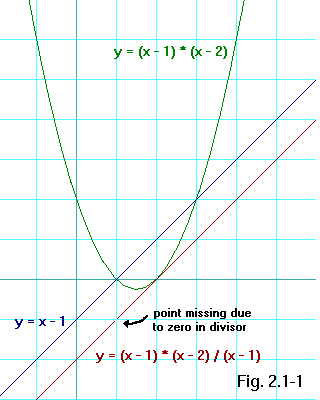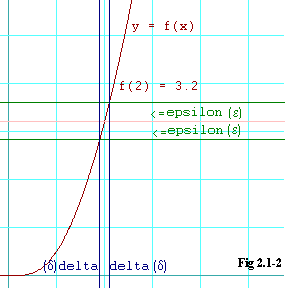

When I was a kid, my aunt went and bought this tiny little car. Undoubtably the real reason she did it was because she was going through some financial difficulties at the time, and it was all she could afford. But what she told her kids (my cousins) was that small cars were good. Big cars hog the road, don't drive well, destroy the earth, and so on. Well one day my aunt and cousins showed up packed into this thing. The eldest of my cousins got out and proceded to repeat the whole "small car good, big car bad," line to me. We then walked down the driveway, and there was our big old station wagon, which my dad had assured me was a great car. So I asked my cousin, "Is this car too big?" Realizing that a little tact was called for, he replied, "No, but if it were any bigger, it would be too big."
Well, I found that response perfectly maddening. You mean, if you added just one inch, it would be too big? What if you just added a coat of paint to the bumper -- that would make it a little bigger. Would it be too big then? It was clear to me that there was no place where too-biggness started, only a place where small-enough ended. What was maddening had nothing to do with my cousin. It had everything to do with discovering something new about how the world works. What was the biggest a car could be and not be too big? Our station wagon filled that bill. But what was the smallest a car could be and still be too big? In my cousin's world, no such thing could possibly exist.
It took days for me to resolve this dilemma in my own head. And what resolved it was thinking about all the little-boy macho games I had played with other boys -- like the time a bunch of us found our way to the roof of a condemned building and dared each other how close to the edge of the roof we could stand. Clearly there was a place where you could not stand, and if you tried to stand there you would find yourself plummeting toward the ground. But there was no place that was the absolute limit of where you could stand without falling, and that, of course, was the whole point of the game. No matter how close you stood to the edge, some other guy could stoke up his courage and skooch just a tad closer to disaster than you were.
And this brings us to another kind of a limit. How close can you stand to mathematical disaster without falling off the edge? But what is mathematical disaster? Well, division by zero, for one. Thou shalt divide by any of the fruits of this garden, but by the tree of zero, thou shalt not divide. You mean I can divide by a tiny little number like 0.00000001, but not by zero? Yep. Even by 0.0000000000001? Yep -- even tinier than that. Just don't go dividing by zero.
So there is that spot we can't stand on without falling. But if I dare you to stand closer to it than I am, you can always do it.
So suppose I had the function:
x2 - 3x + 2
y = eq. 2.1-1
x - 1
Well, you can probably quickly convince yourself that the numerator of
2.1-1 factors and you have the same as:
(x - 1) (x - 2)
y = eq. 2.1-2
x - 1
And of course the y = x - 2 eq. 2.1-3Well, kind of. That works for all values of x except
 The figure shows the missing point at
The figure shows the missing point at
Let's go back to the macho boys standing on the roof of the condemned building, but imagine that it's a sloped roof. So the altitude of each boy's feet varies according to where on the roof he is standing. Based upon how far right or left a boy is standing, we can determine how high his feet are. Imagine that red trace of our graph represents the roof. The hole in the graph is a hole in the roof. If one of the boys tries to stand there, he will fall all the way to the basement and his mother will be angry with him. But the boys persist in a game of who-can-stand-nearest-the-hole. So how high would a boy's feet be if he could stand on the hole?
In a way, that sounds like an absurd question -- rather like the proverbial tree falling in the woods with nobody around. You could even be a smartass about it and say his feet would be at the same altitude as the rest of him, all twisted up in the basement. Yet we have a sense that there is a serious answer to this based upon the behavior of the rest of the roof.
Let's say we measure altitude from the basement, which on our graph we'll
say is at
We can learn much from the game they are playing. We see that the closer
a boy stands to the hole, the closer his feet are to being exactly
And that's the point. If you can tell me how close the boy's feet have
to be to
lim altitude of his feet = 9 meters
boy's position > position of hole
Or to put it more traditionally, let x be the boy's position.
Let xh be the position of the hole. Let
af
be the altitude above the basement of his feet. Then we write:
lim af = 9 meters
x > xh
Now let's analyse equations 2.1-1 and 2.1-2 again. As we already observed,
everywhere except at
(x - 1) (x - 2)
lim = (x - 2) = -1
x > 1 (x - 1)
It is with near certainty that your teacher will call upon you to prove
this or that limit is equal to such and such. And he or she will want
you to use the traditional method of delta and epsilon
(that is the method of d and e)
to do it.
Before I demonstrate that for you, I want you to make the connection between
this and what we have been talking about. In the case of the boy on the
roof, I could tell you how close I wanted the altitude of his feet to
be to
In the d and e proofs, the e is the how close the dependent value has be, and the d is the how close you have to make the independent variable to the "goes toward" value in order to make that happen.
In the case of the boy on the roof, the e is how close
his feet are to being exactly
In equations 2.1-1 and 2.1-2, the e is how close y is to -1 and the d is how close x is to 1.
The typical way you see it phrased in a math text is:
We say that:Don't let the formalism intimidate you. What it means is this: You have some real valued function of x, and for convenience we'll call it f(x) (that is it returns some real value for each real value, x, in its domain, that you feed it). f(x) could be almost any expression of x you can think of. You want to see if f(x) approaches some value, y, as x approaches some other value, a.lim f(x) = y xif and only if for each e > 0 there exists a d such that> a|f(x) - y| < e whenever 0 < |x - a| < d .
(Note that|x - a| is greater than zero and therefore never is zero. We are not interested in the behavior of f(x) where x is equal to a. What we are interested in is the behavior of f(x) when x is very close to a)
The test is, I name how close to y I want f(x) to be. That is I say I want f(x) to be within e of y. If, no matter how small an e I name, you can name how close x has to be to a (without actually being equal to a) in order to guarantee what I asked for, then you have proved the limit.
So in the example of equations 2.1-1 and 2.1-2, we have:
(x - 1) (x - 1)
f(x) = eq. 2.1-3
(x - 1)
We also have In general, if you can show a formula that, given an e, turns out a d that always meets the test, then you have met your teacher's test, and he or she will mark your work correct.
We have discussed two kinds of limits so far, a limit that a sequence of numbers approaches, and a limit that a function approaches. They may seem very different, but they aren't. In both cases, a limit is like a contract. It says, if you need to be this close to something (and it doesn't matter how close this close is), then I can tell you what you need to do to be this close. That is what the delta-epsilon proofs are all about. That is what limits are always about.
The first type of limit is similar to a race-car mechanic telling the machinist how accurately the engine parts must be cut, and the machinist telling him how many dollars it will cost. However accurate the mechanic wants it, the machinist can deliver it with that accuracy. But the tighter the tolerance, the more the cost.
The second is similar to aiming a rifle. You tell the marksman how close to the bullseye he has to hit, and he can tell you how still he has to hold the rifle in order to make that happen.
Here is a graphic that illustrates the delta-epsilon method of
proving the second kind of limit.
 The two green horizontal lines are no more than e above the
limit as
x goes toward 2 and no more than e below
the limit.
The two blue vertical lines are spaced d on either side of
The two green horizontal lines are no more than e above the
limit as
x goes toward 2 and no more than e below
the limit.
The two blue vertical lines are spaced d on either side of
If you remember these underlying ideas about limits, learning the details of how to do limits proofs will be a lot easier for you.